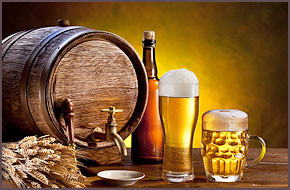Experience the world of craft beer
n the world of beer there are two very basic divisions; macrobrew and microbrew. Macrobrews are large-scale production beers widely available in the mainstream market. Microbrews, on the other hand, are small-scale production that is more limited in availability.
Craft beers range tremendously in flavor, ingredients, and alcohol level. While large production sizes don't automatically indicate lower-quality beer, microbrews, also referred to as craft beers, tend to be appreciated more for their complexity, variety, and quality that are achieved through the precision and attention put in to creating small batches of each brew. We offer upwards of 800 varieties of craft beers, so come by and find the ones that are perfect for your tastes.
Learn more about craft and microbrewing
- The vast majority of Americans live no more than 10 miles from a craft brewery.
- Craft brews are characterized by innovation and creativity that take the traditional approaches to ingredients in beer and add a unique twist to produce an original style or flavor.
- Craft beers tend to have very limited releases, with many of them being seasonal. This means they are only released during a particular time of the year. Examples of these seasonal include Oktoberfest and spiced ale styles that are released in the fall and winter, respectively.
- These are not beers you are going to readily find in your big-name grocery store. While some microbrews have become more easily available, most are still limited to industry stores.
- Traditional, historic styles are honoured in craft brews, but it is expected that these styles will be interpreted differently by each brewery, and in fact many microbreweries have several different versions of styles of beer ranging in flavor, color, and intensity.
- Microbreweries are usually strong features in their community, dedicating time and money to philanthropic endeavors, sponsoring events, and focusing on the betterment of their area. This often includes releasing beers that can only be found in the immediate area of the brewery.
- Specialty products such as ciders and gluten-free beers are becoming more common among microbrewers who want to share their passion for craft beers and products with a wider audience.
- While there are four primary ingredients in nearly every beer, the way these ingredients are manipulated and what is added to them is what produces the unique flavors and experiences. One such change is the use of malted barley as opposed to unmated barley. Malted barley produces a richer, darker flavor, with some brews ending up nearly black with the depth of the roasted malt.



